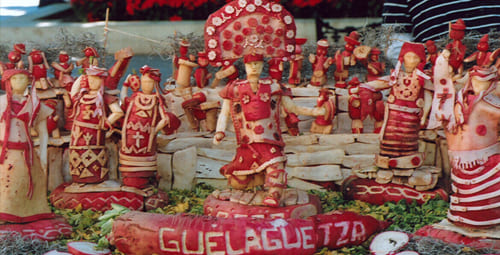 Appalachian Mountains are a range of mountains
stretching across eastern North America. One of its peaks is called Eagle’s
Nest Mountain. It overlooks Lake Junaluska. At its shore in the shadow of the
mountain once stood a lodge, taking us the story of Cinderella.
Appalachian Mountains are a range of mountains
stretching across eastern North America. One of its peaks is called Eagle’s
Nest Mountain. It overlooks Lake Junaluska. At its shore in the shadow of the
mountain once stood a lodge, taking us the story of Cinderella.
The story of Cinderella is very old. The earliest
version is of Chinese origin and dates back to 850 A.D. Since, then hundreds of
variants have been collected from around the world. The Grimm Brothers recorded
the German version of “Aschenputtel.” Most likely the European settlers brought
a similar version to the Southern Appalachian area of America and eventually
told it as “Asphet.”
A long time ago, in a cabin located deep in the Southern
Appalachian Mountains lived a servant girl called Ashpet. She was hired by the
Widow Hooper and her two daughters, Myrtle and Ethel, to help with the
household chores.
Every summer, the folk of Eagle’s Nest Mountain gathered
for a big church meeting. The Widow and her two daughters always dressed their
best, leaving Asphet with all imaginable chores: washing, ironing, and mending.
The poor girl was so overworked that she didn’t notice that the fire had gone
out in the fireplace.
Next morning, furious Widow sent her younger
daughter to old Granny’s house to borrow some fire.
“Why can’t Ashpet go?” complained Myrtle. “She’s
supposed to do all the chores.”
“She can’t go,” yelled the Widow. “She has to finish
preparing our dresses.”
Myrtle approached the old Granny’s house and yelled,
“I came for some fire!”
A scratchy voice echoed from the house, “Why don’t
you come in and brush my hair first.”
“I’m not brushing your hair!” hollered Myrtle and
left.
When she came back empty handed, it almost sent the
Widow into a fit.
“Ethel!” she yelled, “run to Granny’s and fetch some
fire.”
Ethel didn’t do any better as she didn’t want to
comb Granny’s hair neither. And returned empty handed.
The Widow exploding with rage threw Ashpet out the
door and commanded, “You better come back with some fire!”
Ashpet approached the cabin and knocked softly on
the front door.
“Who is it?”
“My name is Ashpet, and I was sent to borrow some
fire,” answered the girl.
“Why don’t you come in and brush my hair first,”
asked Granny.
Ashpet went inside, picked up a brush and combed the
old lady’s long hair.
“Are you going to the big church meeting,” asked
Granny.
“Don’t reckon I will. I’m just a serving girl with
all the chores to do and no time left for myself.”
Granny smiled and kept her thoughts to herself.
Instead she said, “Why don’t you help yourself with the fire.”
Ashpet started a new fire at the house and heated a
pot of water. The mother and sisters bathed and Asphet helped them with
dresses.
As soon as they were gone, Granny appeared at the
door.
“Knock, knock, why don’t you meet me outside?”
Ashpet did as asked. Granny poked her head inside
the house, murmured something under her nose, and tapped her walking stick
three times on the floor. The cabin shook. Furniture scrapped. Dishes rattled.
When the door flew open, Ashpet peered inside. The cabin was spotless: the
floor was swept, the dishes were washed and dried, the clothes were cleaned and
folded, the beds were made. And even there was a new dress, spread on a chair,
red as the ripest raspberries and red shoes matching the color of the dress
stood by the chair.
“Don’t you stand and stare. Change your clothes and
catch up with the others. But remember be back before midnight.” And with that
the old woman was gone.
In a blink of an eye, Ashpet cleaned up and fit her
new dress and shoes. And she danced her way to the meeting.
After the church sermon, the folk set outside for
picnic. The Widow and her two daughters approached the doctor’s son to join
them. But he already had his eyes on Ashpet and asked her to accompany him. The
mother and sisters flew into a temper and left the picnic.
Time slipped on by as Ashpet and the young man
walked and talked and laughed. Just as they were strolling by the river and
crossing a small bridge, a yellow moon and tiny stars lighted the dark sky,
reminding Ashpet of the time. She quickly kicked one of her shoes off into the
bushes.
“Oh, I lost my shoe,” she declared.
As soon as the doctor’s son turned around to search
for the shoe, Ashpet took off through the woods.
The next morning the Widow questioned the girl about
her whereabouts last night, but before Ashpet could utter a word, Myrtle
yelled, “Mother, mother, the doctor’s son is approaching our house.”
“What are you waiting for!” yelled the mother. “Get
dress quickly.”
“You!” she pointed her finger at Ashpet. “You hide
under the washtub and don’t you dare to peek out.”
“Knock, knock, Widow Hooper. Can I come in? I won’t
take much of your time.”
“Of course, come in and stay as long as you wish.”
The doctor’s son explained that he searched every
cabin already looking for the girl who lost her shoe last night.
“I’m sure it belongs to one of my daughters,” declared
the Widow.
Ethel came down. She pushed and shoved and twisted
her foot, but the shoe just wouldn’t fit.
Then Myrtle came down. She snatched the shoe and
crammed and pushed her foot into it, but her foot was too long and wouldn’t fit
the shoe.
“I thank you both,” said the young man and when he
was about to leave, a big black bird flew in. Snatched the shoe and flew over
the washtub. The doctor’s son trying to catch the shoe, tripped over the
washtub and knocked it right side up. There sat Ashpet, wearing the other shoe.
“I think I found the girl I’ve been looking for,”
smiled the young man.
Without looking back, Ashpet walked out the door to
marry the doctor’s son.

Source: Ashpet retold by Joanne Compton














.jpg)

